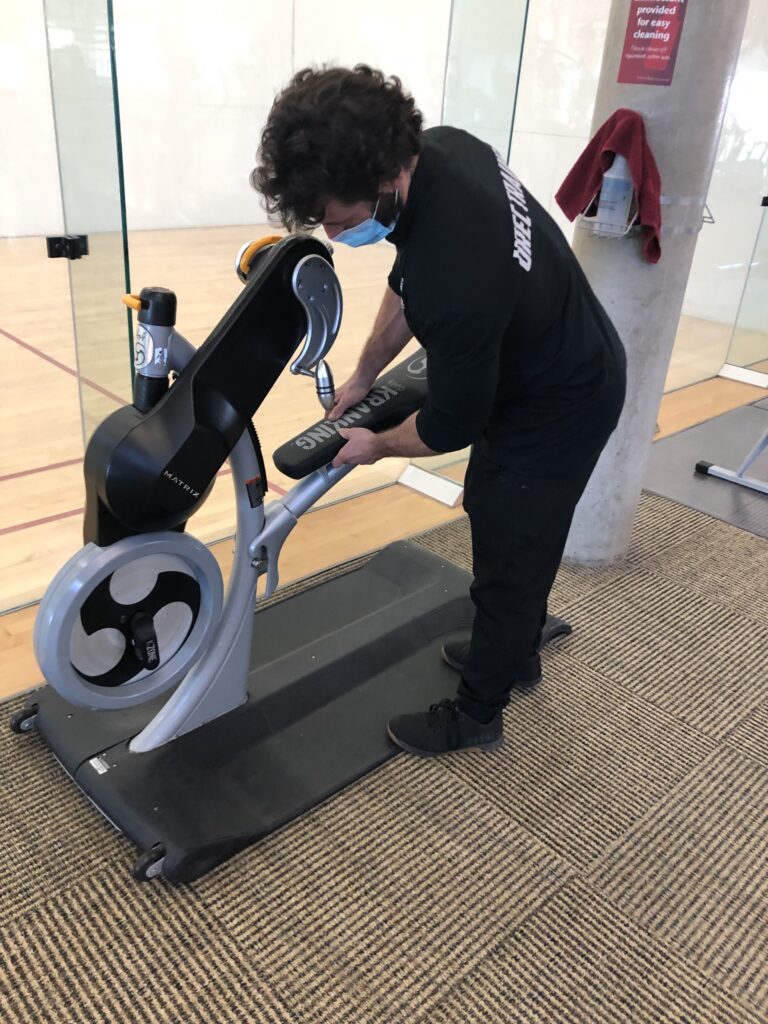In a significant step towards increasing access, University Recreation (UREC) has purchased nearly a dozen new pieces of adaptive equipment designed specifically to meet the needs of people with disabilities.
“Adaptive equipment provides mechanisms for individuals that need it to exercise,” said Ramon Sodano, UREC fitness and education coordinator.
People who use wheelchairs or who are missing limbs often find traditional exercise equipment difficult, if not impossible, to use.
Adaptive in a variety of ways
The new adaptive equipment, available in both the Student Recreation Center and Chinook Student Center, includes a ski erg which allows the user to mimic the motions of Nordic skiing by providing a modified platform for wheelchairs and extensions that lower the handles. There is a hand bike that features a removable seat, making way for a wheelchair, and a variety of portable adaptive equipment, such as mono jump ropes that are weighted and can be used by persons in a wheelchair or with one arm.
In addition, there are special attachments designed to allow single-arm individuals to use a rowing machine and an Aldridge Arm Deadlift Strap, which wraps around a person’s chest and attaches to one end of a barbell, allowing a person with one arm to perform deadlifts.

Sodano said one of the most important and simple additions is a lap pad that rests on a person’s legs while sitting in a wheelchair and protects their legs from the weight of a barbell. Non-latex pullup bands are also available for those allergic to latex.
Even though much of the adaptive equipment is accompanied by a sign explaining what it is, some patrons are curious and want to know more.
“We welcome questions from all our patrons and enjoy showing them how the equipment is used, regardless of whether or not they have a physical disability,” Sodano said.
While UREC staff have received training on using the adaptive equipment, they plan to further their knowledge by participating in an immersive adaptive and inclusive trainer certification course provided by the Adaptive Training Academy this spring.
Coaching para-athletes
Adaptive equipment can make a big difference in building strength and agility for the athletes Shannon LaRoza, assistant director of aquatics and shared facilities, works with at ParaSport Spokane, an organization that provides training, recreational, and competitive opportunities for people with disabilities. The former Cougar javelin and hammer thrower volunteers to coach 20 track and field athletes from across Eastern Washington.
LaRoza has an invisible disability stemming from her autoimmune disease but is considered an able-bodied athlete for sports such as basketball and track. As an experienced thrower who knows the standard techniques in the sport, she quickly learned that many of those techniques can be applied to para-athletes.
Two of her athletes – a shot putter with a short stature classification, and a discus thrower who is a below the knee amputee – qualified for the Paralympic Trails held in Minneapolis, Minn., in June. For LaRoza and these athletes, it was their first taste of coaching and competing in a major competition.

“I told them to focus on performing their best, and not to get caught up in the competition,” LaRoza said. “I wanted them to meet former Paralympians, take it all in, and just have a positive experience.”
Their experience was very positive indeed, and LaRoza said she learned a lot about para-athletes – their passion for sport, their desire to be part of a team, and their drive to be the best they can be.
“It challenged me to think creatively about different ways we could develop their motor skills so they could keep improving their throwing,” LaRoza said. “But getting to know these athletes, where they would open up and tell me about their life, their disability, their goals and ambitions, that has been the biggest reward.”






